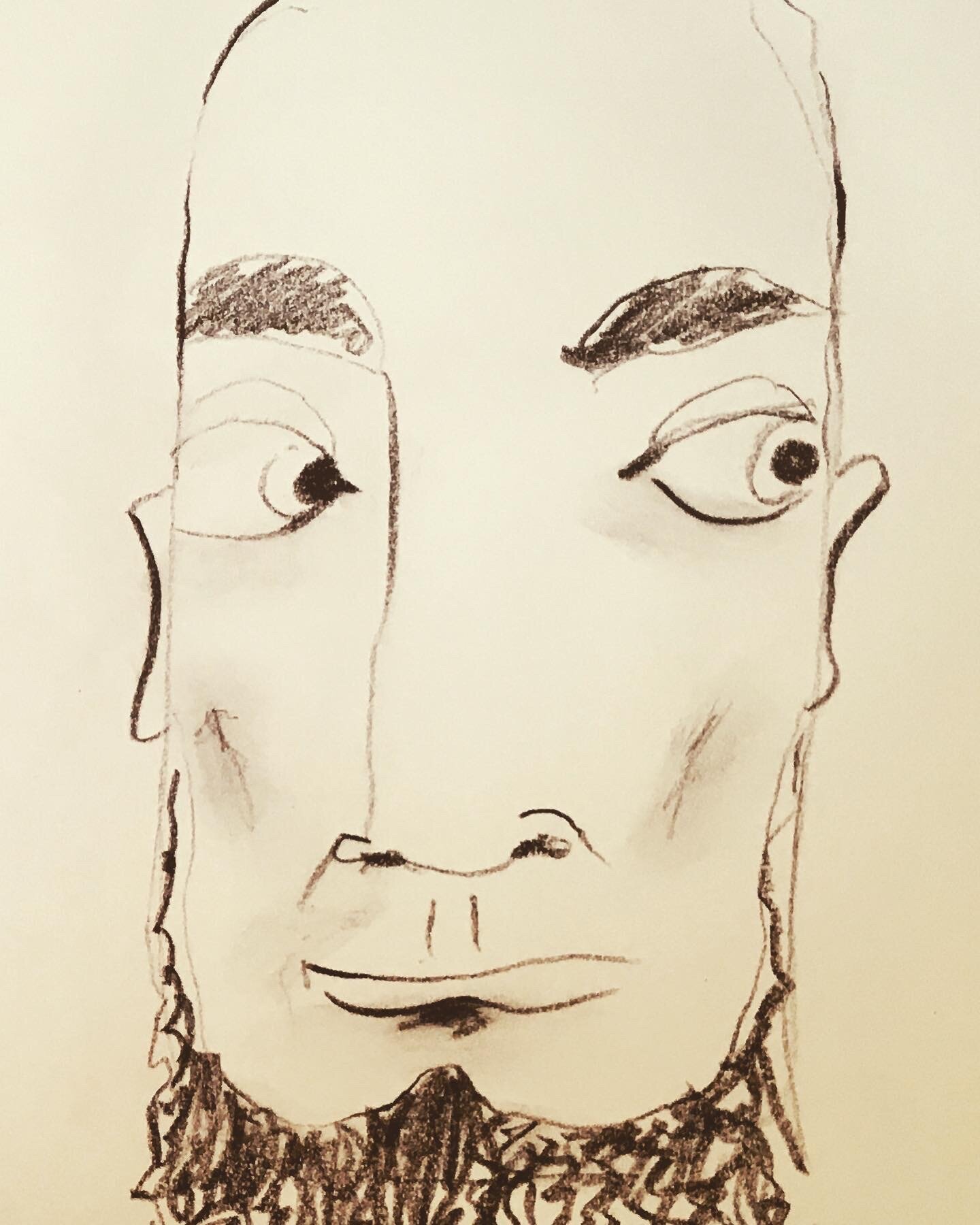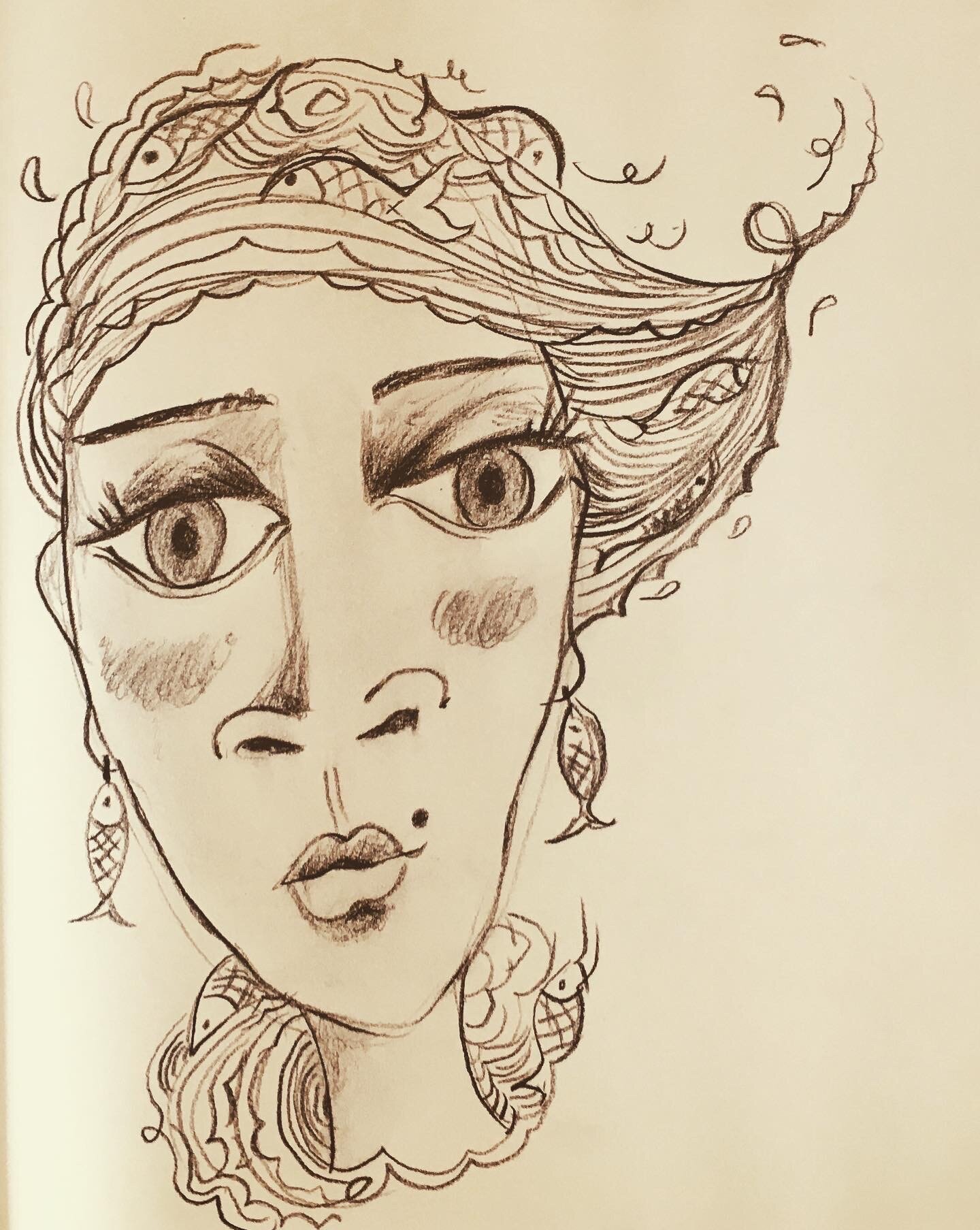‘Only a fool would dare to awaken the Jongobble’ they said… and a fool it was to be.
Next to the town, there stood a hill. ‘Beware of the hill with the Jingleroot trees’ the townspeople would often say, ‘for it is under that hill that a monster lies sleeping’
Many moons ago, so it was said, the Jongobble had been enchanted by the bells of the Jingleroot Trees, which played an irresistible melody, and lured him away from his terrible rampage, long after he had trampled the forest and gobbled up many of the townspeople.
They say that he now lies sleeping under the ground, the shape of his body disguised under a beautiful green hill on which the Jingleroot Trees stand.
The fool, (known by the townspeople as the ‘joker’) passed through the town every year, and always ignored the warnings of the townsfolk. ‘Whoever heard of a Jongobble!’ he would laugh hysterically ‘it is but myth and legend!’ And with a careless kick of his heels he danced his foolish dance, to the bells of the Jingleroot trees, which now played an eerie but contagious lament.
He hopped and skipped, twirled and pirouetted, then stamped on the grass, causing a great shake, all the while laughing recklessly into the wind, unaware of the chaos his careless steps would bring…
The Jingleroot trees only grew in one place. At the top of the hill that overlooked the town.
There had been a time when the Jingleroot trees were rich in colour… on each branch grew bells of crimson, yellow, vivid greens and luminescent blues. It was said that their bells played a melody so sweet that it would stop you in your tracks. But for years now all the townspeople had heard was a mournful lullaby that wafted eerily from the hill and the trees looked barely alive.
Everyone feared that hill and none would go near it. The childrens of the townspeople revelled in the stories of the Jongobble which their parents told each night before bed,
painting for their little ones a picture of a hideous monster with white fur, a rats tail and deadly spikes.
Some say he was slain and would never rise again. Others thought he was merely sleeping, entranced into a deep slumber by the bells of the Jingleroot tree.
Little did anyone know that the as the Jongobble lay under that hill, the Jingleroot tree roots had reached out and blind themselves to him. Perhaps the roots were feeding him life, or he was sustaining the trees in their sinister trance … but it was a frightening and dark energy that played that eerie tune..
On the night of the brightest star, the ground beneath the Jingleroot trees rumbled and quivered. At the bottom of the hill, a blood curdling screech was heard by the townsfolk, then suddenly a great shadow loomed upon them…
And so it was that the Jongobble broke from his long slumber and entered into a new age of rage.
On and on he ranted and raged, raged and ranted, stamping and stomping, gripping and ripping, tree after tree. Trunks and branches were trampled and flattened, forest animals fled, and the townsfolk below waited, their hearts beating so hard that the ground below them pulsed with their fear.
All the tales of the terrible Jongobble that had passed down through generations had one common thread. The Jongobble only feasted on human flesh. When it came to the animals of the woods he paid no attention. Wolves, foxes, rabbits and deer .. all were invisible to the Jongobble. Just the scent of them would send him the other way. It was human bones he wanted to crunch between those hideous teeth.
Armed with this myth, the townsfolk set to work piecing together their rough-hewn animal costumes. With trembling fingers they cut and sewed through the night, covering themselves with animal scent, racing against time as the shadow of the Jongobble grew ever closer.
Day was breaking and the Jongobble’s rampage seemed to have no end.
Suddenly, over the brim of a hill he appeared… carving a vicious path through the trees, which seemed to recoil backwards as if in fright.
All the townsfolk could do now was watch, and wait.. and hope.
Meanwhile, the Joker was full of remorse for his foolish dance and its terrible consequences.
As soon as he heard the terrified cries of the townsfolk and saw the great chasm in the earth where the Jingleroot trees stood, he realised that the Jongobble was not just myth and legend, but real and fiercer than he could have imagined.
He tore through the trampled forest to the apothecary at the edge of the town, and begged for a potion that could reverse his foolish deed. With haste the apothecary prepared him a potion. “Sprinkle the contents of this phial onto the trunks of the Jingleroot trees, and they will lure the Jongobble back to sleep” she told him.
And so the Joker ran to the hill where the Jingleroot trees stood, crying with remorse all the way, so much so that his tears mixed with the potion which he clutched tight.
Sprinkling the potion onto the diseased tree trunks he waited with a desperate heart. After what seemed an eternity, the eerie lament of the Jingleroot bells ceased, and the dull lifeless colour of the trees faded. Then, quite suddenly the trees were ablaze with rich colour. Never had the joker seen such beauty.
And that’s then the magic happened…
Before the Joker’s baffled eyes, the chasm in the hill mended itself, and the grass once again grew. A quiet breeze blew the branches of the Jingleroot trees, now pulsing with vibrant colour. The bells of their branches shook, and then, through the air came a melody so heartfelt and beautiful it struck everything still. Ears pricked, heads turned and souls were touched to their very core.
The Jingleroot trees now played a melody of love, full of feeling, abundant in empathy from the tears that had mixed with the potion, the Joker’s heartfelt tears of remorse. It resonated through the air across the hills and through the forests.
The Jongobble, set on his destructive path, had almost reached the townsfolk when suddenly he stopped, unable to move. The melody circled around him and through him, and then found something inside him.
He looked at the townsfolk, quivering and vulnerable in front of him, and instead of thriving on his own power, he saw straight into their eyes and felt their fear. He felt that he stood where they did. The Jongobble saw reflected in their terrified faces his own fear, felt many moons ago. Fear of being ‘the other’, fear of being different and not accepted. Fear of being drive away, underground.
He sunk to his knees, his face softening, and claws retreating. He looked suddenly quite vulnerable, and peace seemed to flow through him.
From that day the Jongobble lived amongst the townsfolk as their friend and equal. The stories of the terrible beast who lived under the hill were still told each night, some might say with even more flare and embellishments than before, but now there was a firm and beautiful ending to the tale. A tale of empathy, acceptance and love.
So, perhaps next time you take a walk over a hill, you might decide to pause and consider what lies beneath your feet..
























































